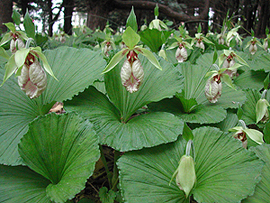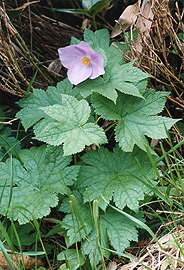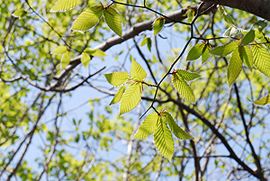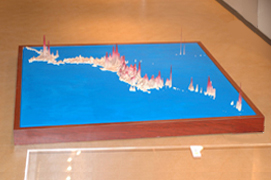Creating topographic maps to enhance understanding of biodiversity
Biodiversity
Biodiversity is characterized by the concept that no two life forms are identical. The word biodiversity was first defined by the entomologist E. O. Wilson. Although there are many aspects of biodiversity, such as genetics and morphologies, here we focus on species diversity.
Some scientists estimate that there are anywhere between 10 - 100 million species (including unknown species) on Earth. Of these, at this time about 1.73 million species are known, including some 270,000 plant species. Approximately 7,000 plant species of mosses and ferns are found in Japan, and plant diversity in Japan is higher than in all European regions.
Biodiversity hotspot
As exemplified by the food chain, all organisms are connected. Humans, among all species of organism, are known to utilize the most other organisms, for numerous purposes. Therefore, biodiversity is indispensable to human life. However, with expansion of the range of human activities comes a reduction in, or extinction of, other organisms, which can lead to a loss of biodiversity. To understand and prevent loss of biodiversity, we need to designate certain regions as "biodiversity hotspots" that must be strictly protected.
The term biodiversity hotspot was first proposed by Norman Myers (1988), a conservation biologist. To qualify as a biodiversity hotspot, a region must meet two strict criteria: it must contain at least 0.5% of - i.e., 1,500 - endemic species of vascular plants and it has to have lost at least 70% of its primary vegetation. Globally, 34 areas qualify under this definition, and there are 9 other possible candidate areas. These sites support nearly 60% of the world's plant, bird, mammal, reptile, and amphibian species, of which a very large proportion are endemic.
Extinction of species endemic to a specific region translates to their permanent disappearance from the Earth. Conserving biodiversity in all regions of the world is not practically feasible. Therefore, regions containing many endemic and threatened species, such as biodiversity hotspots, should be conserved. In 2000, 25 regions in the world were designated as biodiversity hotspots, with that number since rising to 34.
These regions represent only 2.3% of the world's total area, but contain nearly 75% of mammal, bird, and amphibian species currently threatened by extinction, as well as 50% of all vascular plants and 42% of all terrestrial vertebrates. Japan has also been designated as one of the 34 biodiversity hotspots.

Cypripedium japonicum
Endemic species
Most Japanese plant species are also found in the Korean Peninsula, Taiwan, the Chinese mainland, and other areas, but about 33% are endemic to Japan. Some well-known Japanese endemic species include Prunus speciose (Rosaceae), Glaucidium palmatum (Ranunculaceae), Sciadopitys verticillata (Sciadopitydaceae) Fagus crenata (Fagaceae). Out of them, some species such as Japonolirion osense (Petrosaviaceae), Aconitum kitadakense (Ranunculaceae), Leontopodium hayachinense (Asteraceae), Melastoma tetramerum (Melastomataceae) and Satakentia liukiuensis (Arecaceae) , which grow in a very limited region with small populations; thus, they are treated as endangered species.

Glaucidium palmatum

Fagus crenata
Biodiversity map
To understand the distribution of all plant species - and also of endemic and threatened plant species - in Japan, we first created a biodiversity map of the distribution of endemic and threatened plant species. The biodiversity map is useful in identifying regions that must be a top priority for conservation, and as a basis for discussion of the biological/historical background leading to endemism in Japan. The biodiversity map was created as part of the "Biological Properties of Biodiversity Hotspots in Japan" research project.

Biodiversity map
